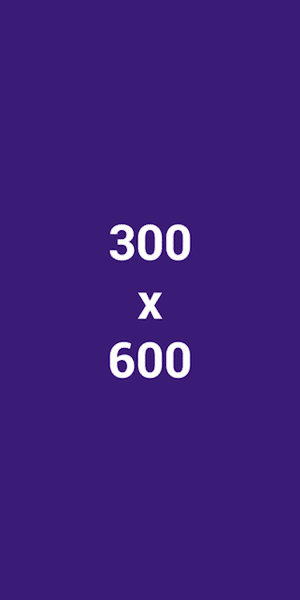Exploring the domain of text-based art offers a mesmerizing journey into a world where words transcend their mere semantic obligations, morphing into vessels of aesthetic and conceptual significance. This artistic frontier is not as straightforward as it may appear. At its core, yes, text-based art incorporates text, but the boundaries and rules around its creation and interpretation are anything but clear. Do visuals accompany or conflict with the textual elements? Is the presence of coherent language a necessity, or do we find value in the visual texture of randomized letter placements? And then there’s the broader cultural context—how do commercial ventures like those of Milton Glaser or the profound spiritual expressions found in Islamic calligraphy fit within the tapestry of text-based art?
Attempting to confine text art within a rigid definition is a challenging endeavor. Could there exist a single definition that encompasses the vast landscape of this art form? Indeed, is such a definitional constraint necessary, or even beneficial?
For our exploration, we focus on the contributions of artists from the 20th and 21st centuries, particularly those who engage primarily with the English language, to navigate the vastness of this realm. Adopting a broad working definition, we view text-based art as a craft where the incorporation of language elements—whether through linguistic purity or an amalgamation with imagery or objects—plays an essential role. This art provokes, challenges, and captivates by engaging both the intellectual and emotional faculties of its audience. It weaves together visual art, literature, and poetry into a rich, multifaceted experience that expands upon traditional artistic boundaries.
This intricate art form’s siblings, such as concrete poetry, visual poetry, and the outputs of the Fluxus movement, are stories within themselves, deserving of their own narratives at another time.
René Magritte
Within the historical narrative of text-based art, René Magritte’s iconic work “The Treachery of Images” stands as a profound early example, teetering on the borderline between textual and visual art. Similarly, Georges Braque integrated text through the incorporation of newspaper clippings, pushing the envelope of what art could convey.
Cy Twombly
Cy Twombly ventured further into the realm of text-based art, imbuing his canvases with scribbled text that danced between legibility and abstraction— a conversation later expanded upon by Jean-Michel Basquiat’s raw, poignant expressions.
Ed Ruscha
Ed Ruscha, initially drawn to the West Coast for its vibrant art scene, found his voice at the crossroads of visual art and advertising. This intersection birthed pieces like “Honk” (1962), where textual expression and aesthetic form collide to create a new art language.
Andy Warhol
Andy Warhol’s “Campbell’s Soup Cans” are perhaps among the most recognizable instances of text intersecting with mass culture within art. Warhol’s work encapsulates the transformative power of repeated textual motifs, bridging the gap between commercial branding and high art.
Roy Lichtenstein
Roy Lichtenstein’s “Whaam!” takes the familiar narrative formats of comic books and transposes them onto the canvas, infusing the piece with dynamism and a novel form of textual engagement.
The evolution of text-based art has seen artists like Joseph Kosuth and John Baldessari challenge and expand the boundaries of language and its visual representation. Kosuth’s conceptual explorations and Baldessari’s cynical commentary on the art market exemplify the diverse ways text can carry meaning within art.
From the politically charged installations of Barbara Kruger to the introspective and personal narratives woven by Tracey Emin, text-based art encompasses a broad spectrum of themes and styles. Artists like Glenn Ligon engage with historical and social narratives, using text to highlight issues of identity and systemic oppression. In contrast, artists like Kay Rosen and Erica Baum explore the aesthetic and poetic potentials of text, pushing the boundaries of how language functions as visual form.
Text-based art, in its myriad forms and expressions, continually challenges our perceptions and understandings of language, art, and the intersections between them. Its ability to convey complex ideas, evoke emotional responses, and comment on societal norms makes it a powerful and dynamic facet of contemporary art.
Intrigued by the vast realm of text-based art and its ability to blur the lines between linguistic and visual experience? Delve deeper into the world of innovative art forms by visiting DeFi Daily News for more trending news articles like this.
Conclusion
And so, as our dive into the depths of text-based art concludes—at least for the moment—we find ourselves standing at the edge of an ever-expanding universe of expression. From the poignant subversions of Barbara Kruger to the introspective explorations embedded in Tracy Emin’s quilts, and through the dynamic interplays of form and meaning in Kay Rosen’s works, the journey is as diverse as it is profound. Far beyond scratching the surface, we’ve traversed a landscape rich with innovation, emotion, and critique. Yet, the exploration is far from over. As artists continue to push the boundaries of what text can be within the visual realm, we await the next chapter in this riveting saga, promising further adventures in the intersection of words and art. So, stay tuned, keep exploring, and cherish the myriad ways text-based art invites us to see the world anew.



















